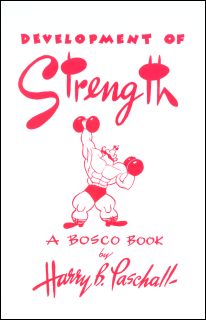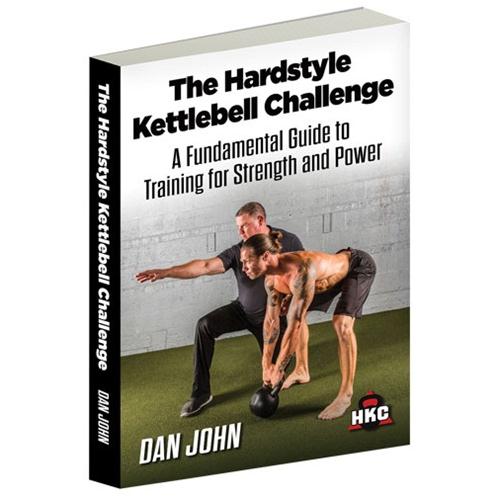Originally Published in This Issue (April 1968)
If anyone gets lucky enough to find a copy of this book by Terry Strand
I'd be real interested in it.
I'd be real interested in it.
About forty years ago, in a little town on the west coast, there was a large, rambling, frame building surrounded by a high board fence. The place looked like a concentration camp, but was actually a factory and storage warehouse where barrels were produced and sold at considerable profit. The owner was a pinched, balding little man who looked like Ebeneezer Scrooge and was known locally as "Old Stickyplaster."
"Old Stickyplaster" ran his business like a nineteenth century mine owner. He paid wages a rat pack couldn't live on and he expected the labors of Hercules in return. He looked on trade unions as a Bolshevik plot and figured Samuel Gompers was in league with the devil.
Old Sticky considered himself a religious man. He plastered the walls of his warehouse with placards announcing the saving grace of hard work. Any worker whose stomach was empty or whose children needed medical care could console himself by reading of the virtues of thrift.
One Sunday, with a great deal of fanfare. Old Sticky donated a large stained glass window to the church. On Monday, he quietly cut the wages at the factory three cents an hour to pay for it. Shortly after, a quiet middle aged man began conferring with the workers on their way home, and two weeks later he walked into Old Sticky's office and announced that the factory was unionized and the men ready to negotiate. Old Sticky leaped to his feet and denounced collective bargaining at the top of his lungs. Three days later there was a picket line around the factory.
Shortly after, two large gentlemen in black overcoats were seen leaving Old Sticky's house late one evening. The next morning the union business agent was found in a vacant lot with severe concussion and two broken legs. It was a week before he could talk, but as soon as he could he made several phone calls. At three o'clock the next morning an explosion blew the front half of the factory across the street and several waxed bags full of gasoline let go with a roar in the warehouse. By daylight the place was flat and Old Sticky was out of business.
The lot grew weeds for several years until a retail food chain built a store on it. The building changed hands several times and underwent various renovations with each change of ownership. Finally it was converted into a small commercial gym. In place of angry workmen, it is now frequented by numerous large and muscular gentlemen actively engaged in getting even larger.
One of these was a chubby man with a gut like a washtub and hair like an unmade bed who never strayed more than ten feet from the squat rack during his whole workout and thought the abdominal board was something you rested on.
One day the chubby man finished his workout and shower. He wrapped himself in a large bath towel with PLAZA HOTEL printed on it and waddled into the gym owner's office.
The gym owner was putting new laces in his lifting boots. "That's a stunning outfit," he said.
"Thank you." The chubby man young sat down. "Just a little something I picked up."
"You realize," the gym owner said, "that if a couple of old ladies happen to wander in and see you like that I'll lose my gym?"
"Don't worry" said the chubby young man. "If the front door opens I'll dash for the locker room."
"That's very comforting," the gym owner said. "Don't forget to take the towel with you. And don't trip," he added as an afterthought.
"Never mind the towel," said the chubby young man. "I got a real problem."
"Indeed?" said the gym owner. "And what is it?"
"It's this definition thing," the chubby young man said. "I'm running a bit and I'm on the definition diet, but I ain't trimming down fast enough."
"So?"
"So I need help. Or maybe a magic wand. There ain't one laying around, is there?"
"Well, as a matter of fact," the gym owner said, "there is."
The chubby young man blinked his eyes. "You're kidding."
"No."
"A magic wand?"
"Well, not exactly a magic wand," the gym owner said. "But something almost as good."
The chubby young man looked interested. "What is it?"
"P.H.A."
"Right. What the devil is that? A new political party?"
"No," the gym owner said. "It's a new training system."
"PHA?"
"Sure," the gym owner said. "It means Peripheral Heart Action."
"That's nice," said the chubby young man. "And what does that mean?"
"I'll tell you some other time," the gym owner said. "Just take my word now that it's the ideal training system for definition."
The chubby young man looked interested again.
"There's lots of pros and cons about PHA," he gym owner said. "But one thing's for sure. It'll bring out the definition faster than any other training method known."
"Good," said the chubby young man.
"There's other good points about it, too," the gym owner said. "It'll improve your health, increase your endurance, and strengthen your heart like nothing on earth."
"And take off fat?" asked the chubby young man.
"And take off fat," the gym owner agreed.
"How does it do all that?"
"It's pretty complicated," he gym owner said. "I'll tell you in detail some other time. Right now I'll just skim it quickly and give you a program to work on."
The chubby young man shifted around in his chair. "Lay it on me."
The gym owner blinked. "Pardon?"
"Gimme the program."
"Oh." The gym owner straightened up. "Well, to start with you can forget about pumping while you're on this program. You don't pump. And you can forget about multiple sets in the ordinary sense of the term."
"The idea," he continued, "is to increase your circulation enormously without congesting your muscles. You pump blood through your muscles rather than just into them."
"No pumping," said the chubby young man. "That's odd."
"I know," the gym owner said. "And I'll explain why some other time. Just take my word for it."
"Now," he said. "You don't do your exercises in sets the way you usually do. You do them in groups. Five exercises to a group. You do a set of exercise one, then a set of exercise two, then a set of exercise three, and so on until you've done one set of every exercise in the group. Then you go back and do a second set of exercise one, a second set of exercise two, and so on right through the group again. Then you go back and do a third set of each exercise in the group."
"Now," he said, "when you finish the first group of exercises, you go and do the same thing with the second group, and then the same thing with the third group."
"Do you understand?" he asked.
The chubby young man ran a hand over his eyes. "Not quite," he said. "Do you mind running through it again?"
"Here," the gym owner said. "I'll write it out for you." He took a pencil and paper and scribbled for a while. "Now," he said. "Look at this."
"Your first group of exercises will be squats, sit-ups, concentration curls, side bends, and a resistance exercise for your neck, in that order.
"You do a set of squats, 10 reps. Then a set of sit-ups, 25 reps. Then a set of concentration curls, 10 reps. Then a set of side bends, 25 reps. Then a set of resistance exercises for your neck, 10 reps.
"Then," he said, "you go back and do a second set of them all in the same order, and then a third set in the same order. That completes the first group.
"Now," he said, "you go on to the second group. You do bench presses, 10 reps. Leg raises, 25 reps. Chins behind neck, 10 reps. Seated twists, 25 reps. And donkey calf raises, 15 reps. Do one set of each in that order and then go back and do a second set of each, and then a third set of each.
"That finishes the second group," he said. "Now you go on to the third group.
"You do stiff-legged dead lifts, 10 reps. Cuddle sit-ups, 25 reps. Press behind neck, 10 reps. Bent forward twists, 25 reps. And French presses, 10 reps. One set of each, then a second set of each, and then a third set of each.
"That finishes the workout," he said. "And how does it grab you?"
"It's different," said the chubby young man. "But I don't quite understand it."
"You don't have to understand it," the gym owner said. "Just do it. I'll explain the reasons why when I've got more time."
"You think it'll work, though?"
"I know it'll work," the gym owner said. "You'll shape up real fast."
"Good," said the chubby young man. "Anything else I should know about it?"
"A few things," said the gym owner. "First of all, you should warm up well before you start. Spend at least five minutes doing light repetition snatches and running on the spot. Then do a warm-up set of every exercise in every exercise in group one with about half your exercising weight.
"Also," he said, "wear a full track suit during your workout. You've got to keep warm all the way through."
"I ain't got a track suit," said the chubby young man.
"Then get one," said the gym owner. He looked at the PLAZA HOTEL towel. "Only buy it, won't you?
"Now," he continued. "The key to this program is to keep moving all the way through it. Don't sit down and rest between exercises. As soon as you finish an exercise walk back and forth for a few seconds and then go right into the next exercise. Just pause long enough to do let you do the next exercise. You should be puffing very slightly right through the whole workout.
"Don't forget that," he said. "It's very important. Finish an exercise, walk around till your breathing rate drops a little, and then do the next exercise. Don't sit down and rest at any time. Keep moving."
The chubby young man blinked his eyes again. "That sounds a little rough," he said.
"Not really. You won't have any congestion to slow you down like you do when you're pumping. You can do it all right."
"I'll try," said the chubby young man.
"And don't drop the other stuff," said the gym owner. "Stay on the definition diet and run two or three days a week."
"I will."
"Good," said the gym owner. "And remember, this is just a break-in program to PHA training. Stay on it for a month or so and I'll give you something a little more advanced."
"Okay," said the chubby young man. "I'll give it the works."
He got up and grabbed his towel just in time. He hitched it higher and walked out and the gym owner went back to lacing his lifting boots.
Note: Here's few more articles on Peripheral Heart Action (PHA) training, by Bob Gajda:














